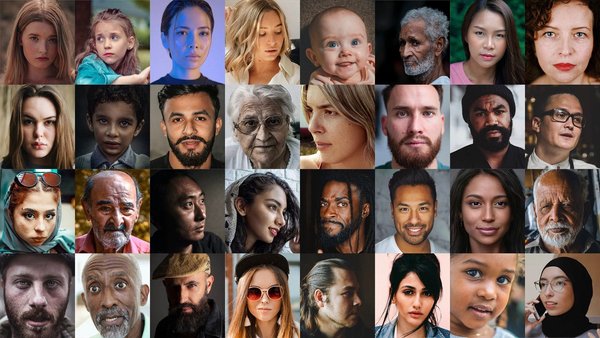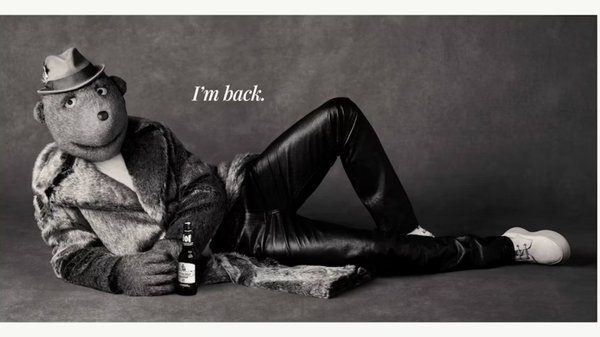Attention and advertising: the dog cone conundrum /
What happens when the nature of our attention changes? What does it mean for advertising, culture and society? Orlando Wood, chief innovation officer at System1 Group, questions what the study of attention tells us about advertising
Contagious Contributor
/
Photo by Priscilla Du Preez on Unsplash
In the technological age our attention has decidedly narrowed. We have created a world where we spend on average three hours a day focused on our devices. So, what exactly happens when our attention narrows?
I got my answer one morning as I went for a stroll. A woman walked past me in the street with her dog. Suddenly, the dog jumped up at me and started to bark, straining at its leash; the owner pulled it away. ‘Sorry about that,’ she said, ‘he’s normally fine – it’s the cone.’
‘It’s the cone,’ I reflected. The dog was wearing one of those veterinary cones. When a dog wears a cone, it can become fearful and aggressive, in large part because it is denied its peripheral broad-beam attention. That’s what can happen when attention is narrowed. And it struck me, isn’t that also precisely what’s happened to our world?
In my new book, Look Out, I draw on psychiatrist Iain McGilchrist’s work to describe the different types of attention we bring to bear on the world. The right hemisphere of the brain presents the world to us and grounds us in it by means of alertness and sustained attention; it’s vigilant, open to what’s out there. Anything of interest it passes to the left hemisphere, which examines the object of interest more closely using focused attention. So, we always see ‘the wood’ with our right hemisphere, using what we might call ‘broad-beam attention’, before we see ‘the trees’ with our left hemisphere (‘narrow-beam attention’).
There are two other periods of history when attention narrowed and you can see this when you examine the culture and the visual arts of those eras. If you look at the portraits of Dürer before the Reformation and avant-garde artists in the years before the Great War, you can see the emergence of ‘the stare’, which signals at once a sense of detachment, a loss of vitality and an adversarial stance. We see this stare again today in art, culture and, yes, advertising. A rigidity is taking hold in culture that can be seen in the face.
When our left hemisphere begins to dominate, so too do some of its more anti-social features. The left hemisphere is more sensitive to dopamine – the hormone associated with the seeking and reward that is so built into our digital world. But dopamine also makes us alive to the pleasures of aggression. Without the right hemisphere to ground us in the world, we begin to feel a sense of detachment. We turn inwards and turn on each other.
So, what is to be done? Well, each of us can take steps to reconnect with the world and people around us, but there might also be an important role that advertising can play too. Because narrow-beam and broad-beam attention have implications for advertising – for creative style and for advertising effectiveness.
There are features of advertising that both hold attention and elicit an emotional response: the living, a scene unfolding in lived time and a clear sense of place. These features appeal to our broad-beam attention, to our right brain. Advertising that uses features associated with the left hemisphere’s narrow-beam attention (including the stare) tends to push people away.
Features associated with broad-beam attention are much more likely to achieve lasting business effects: market share, sales and profit gain, fame, and brand trust. ‘Left-brain’ advertising is marginally more likely to drive short-lived direct effects.
Orlando Wood, System1
The way advertising works therefore mirrors the way the brain attends to the world – broad-beam attention (broad reach, brand building advertising that creates interest) is more important and comes first, followed by narrow-beam attention (narrowly targeted performance advertising, which assumes an interest is already there – nudging those in the buying window towards a purchase).
What kind of advertising do we need in today’s technologically disrupted world? As companies move online, they lose their physical availability. When brands lose their physical availability, they lose their mental availability. So, brand building advertising becomes more important, not less.
In Look Out I describe what that entails: advertising with an appreciation of human uniqueness, movement and connection, with character, incident and place, with humour, music and warmth of colour. The kind of advertising that connects; the kind of advertising that many got into the industry to make in the first place – advertising that entertains.
And in a world full of increasing anxiety, fear and detachment, what could be more wonderful than that?
Orlando Wood’s latest book ‘Look Out’, published by the IPA, is available on Amazon and from the IPA
Want more of the same? /
We don’t just write about best-in-class campaigns, interviews and trends. Our Members also receive access to briefings, online training, webinars, live events and much more.







